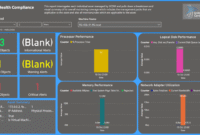Business Intelligence Isn’t Just for Analysts It’s for Everyone, as it empowers individuals across diverse roles to make data-driven decisions that enhance their performance and drive success. In today’s fast-paced world, understanding and utilizing business intelligence tools is no longer reserved for analysts alone. Organizations are recognizing the value of democratizing data access, enabling everyone from marketing to sales to leverage insights that fuel innovation and efficiency.

Furthermore, harnessing business intelligence can lead to more informed strategies, improved customer experiences, and ultimately a more competitive edge in the market. By breaking down the barriers to data access, businesses foster a culture of transparency and collaboration, ensuring that all team members can contribute to informed decision-making.
In today’s fast-paced world, the importance of effective communication cannot be overstated. Whether in personal relationships, the workplace, or even in casual interactions, the ability to convey thoughts clearly and engage meaningfully with others is a fundamental skill. This article delves into the nuances of communication, exploring its various forms, the challenges that individuals may face, and strategies to enhance one’s communicative abilities.
The Essence of Communication
At its core, communication is the act of transferring information from one party to another. This can occur through a variety of mediums, including spoken language, written text, body language, and even visual aids. Each form of communication has its own nuances and implications, requiring individuals to adapt their methods based on context and audience.
1. Verbal Communication: This is perhaps the most straightforward form, encompassing both spoken and written words. Verbal communication is not just about what you say, but how you say it. Tone, pitch, and pace can significantly alter the meaning of a message. For example, a simple phrase like “I’m fine” can convey a myriad of emotions depending on the tone used.
2. Non-Verbal Communication: Often overlooked, non-verbal cues play a critical role in how messages are interpreted. Body language, facial expressions, and eye contact can all enhance or contradict verbal messages. For instance, crossing one’s arms might signal defensiveness, while maintaining eye contact can promote trust and engagement.
3. Visual Communication: The use of images, graphs, and other visual aids can support and clarify messages. In an age filled with information overload, visuals can help simplify complex ideas and make communication more effective. For example, infographics can distill large amounts of data into easily digestible formats, making it simpler for audiences to grasp key points quickly.
Challenges in Communication
Despite the various forms and methods of communication, challenges often arise that can hinder the effectiveness of conveying messages. Some common obstacles include:
1. Misinterpretation: Different backgrounds, cultures, and experiences can lead to varying interpretations of the same message. For instance, a gesture that is considered friendly in one culture may be offensive in another. It is crucial to be aware of these differences and adjust communication accordingly.
2. Emotional Barriers: Sometimes, emotions can get in the way of effective communication. Feelings of anger, sadness, or anxiety can cloud judgment and affect how messages are delivered and received. Taking a moment to acknowledge and manage these emotions can lead to more productive conversations.
3. Lack of Clarity: Clear communication requires thoughtful articulation. Ambiguous language or jargon can confuse the audience, leading to misunderstandings. It’s important to tailor language to the audience’s level of understanding, avoiding unnecessarily complex terms when simpler ones will do.
Enhancing Communication Skills
Improving communication skills is an ongoing process that requires practice and reflection. Here are some strategies to consider:
1. Active Listening: One of the most effective ways to become a better communicator is to listen actively. This involves fully concentrating on the speaker, rather than merely waiting for your turn to talk. Techniques such as nodding, summarizing points, and asking clarifying questions can demonstrate engagement and understanding.
2. Empathy and Understanding: Cultivating empathy allows individuals to connect more deeply with others. By putting oneself in another’s shoes, it becomes easier to appreciate their perspective and respond appropriately. This often leads to more meaningful conversations and stronger relationships.
3. Feedback and Adaptation: Seeking feedback on one’s communication style can provide valuable insights. Constructive criticism helps identify areas of improvement that may not be immediately obvious. Additionally, being adaptable in communication style based on audience needs is a vital skill.
4. Practice, Practice, Practice: Like any skill, effective communication improves with practice. Engaging in conversations, participating in public speaking, or even joining discussion groups can provide opportunities to refine communicative abilities.
The Role of Technology in Communication
Technology has fundamentally transformed the way we communicate. While it offers numerous advantages, it also introduces unique challenges.
1. Instant Communication: With the rise of social media and messaging apps, information can be shared almost instantaneously. This can be beneficial for staying connected but may also lead to misunderstandings due to the lack of non-verbal cues in text-based communication.
2. Virtual Communication: Video conferencing tools have become commonplace, especially in remote work environments. While they allow for face-to-face interaction from a distance, technical glitches and distractions in a home environment can impact effectiveness.
3. Information Overload: The sheer volume of information available online can be overwhelming. Learning to filter and prioritize information is essential for maintaining focus and clarity in communication.
Conclusion
Effective communication is a vital skill that impacts every aspect of life. By understanding the different forms of communication, recognizing common challenges, and actively working to enhance one’s skills, individuals can foster stronger relationships, resolve conflicts more efficiently, and ultimately, lead more fulfilling lives. As we navigate a constantly changing world, the ability to communicate effectively remains a timeless and invaluable asset.
In conclusion, embracing the idea that Business Intelligence Isn’t Just for Analysts It’s for Everyone can transform how organizations operate and thrive. By fostering an environment where all employees can engage with data, companies can unlock potential, drive innovation, and enhance overall performance. As we move forward, the collective efforts of a data-informed workforce will be paramount in navigating the complexities of modern business landscapes.
FAQ Section: Business Intelligence Isn’t Just For Analysts It’s For Everyone
What is business intelligence?
Business intelligence refers to technologies and strategies used to analyze data and present actionable information to help executives, managers, and other corporate end users make informed business decisions.
Who can benefit from business intelligence?
Everyone in an organization can benefit from business intelligence, including marketing teams, sales personnel, and customer service representatives, as it aids in making informed decisions based on data insights.
What tools are commonly used in business intelligence?
Common tools include data visualization software like Tableau and Power BI, as well as data warehousing solutions and reporting tools that facilitate data analysis and presentation.
How does business intelligence improve decision-making?
By providing accurate, up-to-date data and insights, business intelligence enables organizations to identify trends, forecast outcomes, and make strategic decisions based on real evidence rather than intuition.
What are some challenges of implementing business intelligence?
Challenges can include data quality issues, resistance to change among staff, and the need for training on new tools and processes to ensure effective usage of business intelligence systems.



